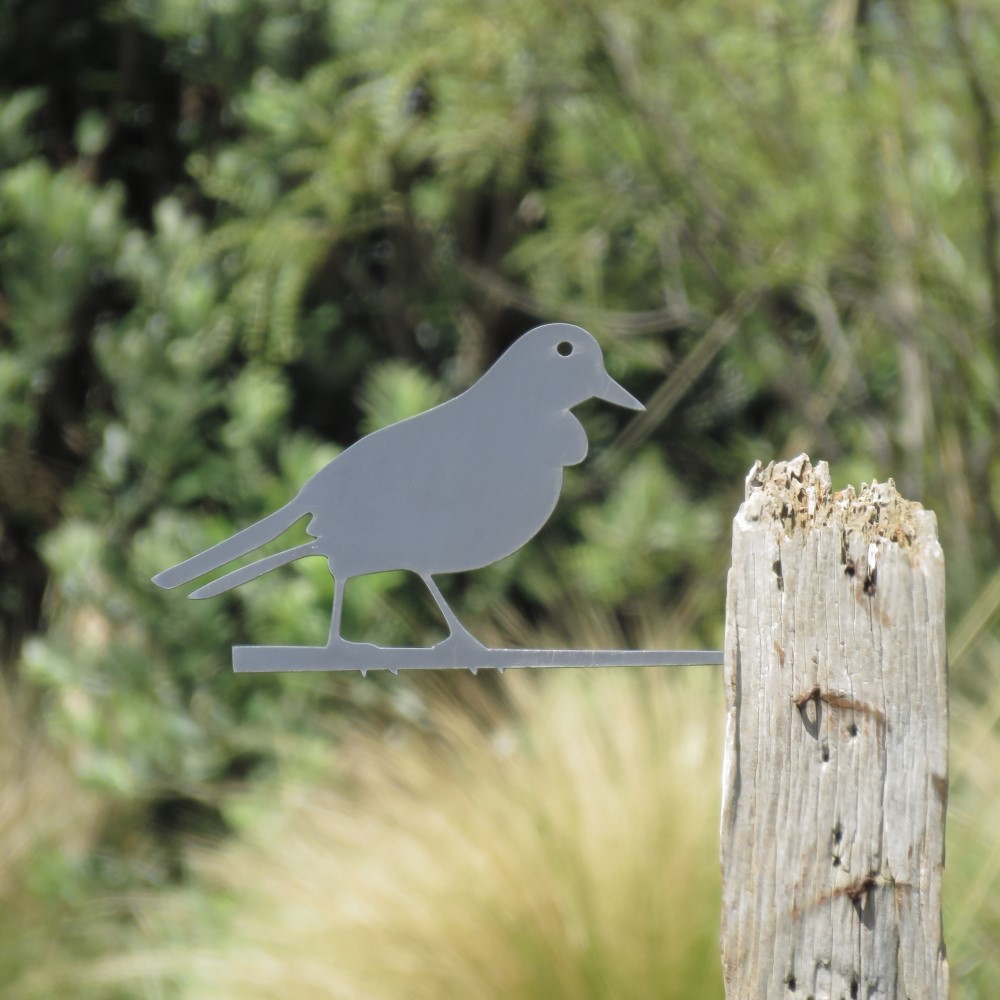The boisterous tui are the largest and best known of New Zealand’s honeyeaters. They have distinctive white throat tufts, whirring flight sounds, and tuneful melodies intermixed with coughs, groans and rasps. They are widespread across New Zealand, and often seen in flax bushes, feeding on the nectar of the flowers.
They play an important role in pollinating flowers of not only the flax, but trees such as the mistletoe, puriri and pohutukawa, as well as dispersing podocarp seeds. When nectar is unavailable, their diet also consists of the fruits of native trees, and is supplemented by insects in the breeding season.
Tui are territorial birds, and will defend their feeding and breeding territories – energetically chasing other birds away. In breeding season, 2-4 eggs are laid, and cared for mainly by the female, with males only help to feed the chicks once they are older.
You can always have a tui in your garden with a Blazen.Metal tui bang’n bird – choose from traditional, koru or pohutukawa inlay. 25% off for the month of February.
Bibliography
Dawson, J., & Lucas, R. (2000). Nature Guide to the New Zealand Forest. Auckland: Random House.
Moon, G. (2002). A Photographic Guide to Birds of New Zealand. Auckland: New Holland Publishers.
Robertson, H.A. 2013. Tui. In Miskelly, C.M. (ed.) New Zealand Birds Online. www.nzbirdsonline.org.nz



